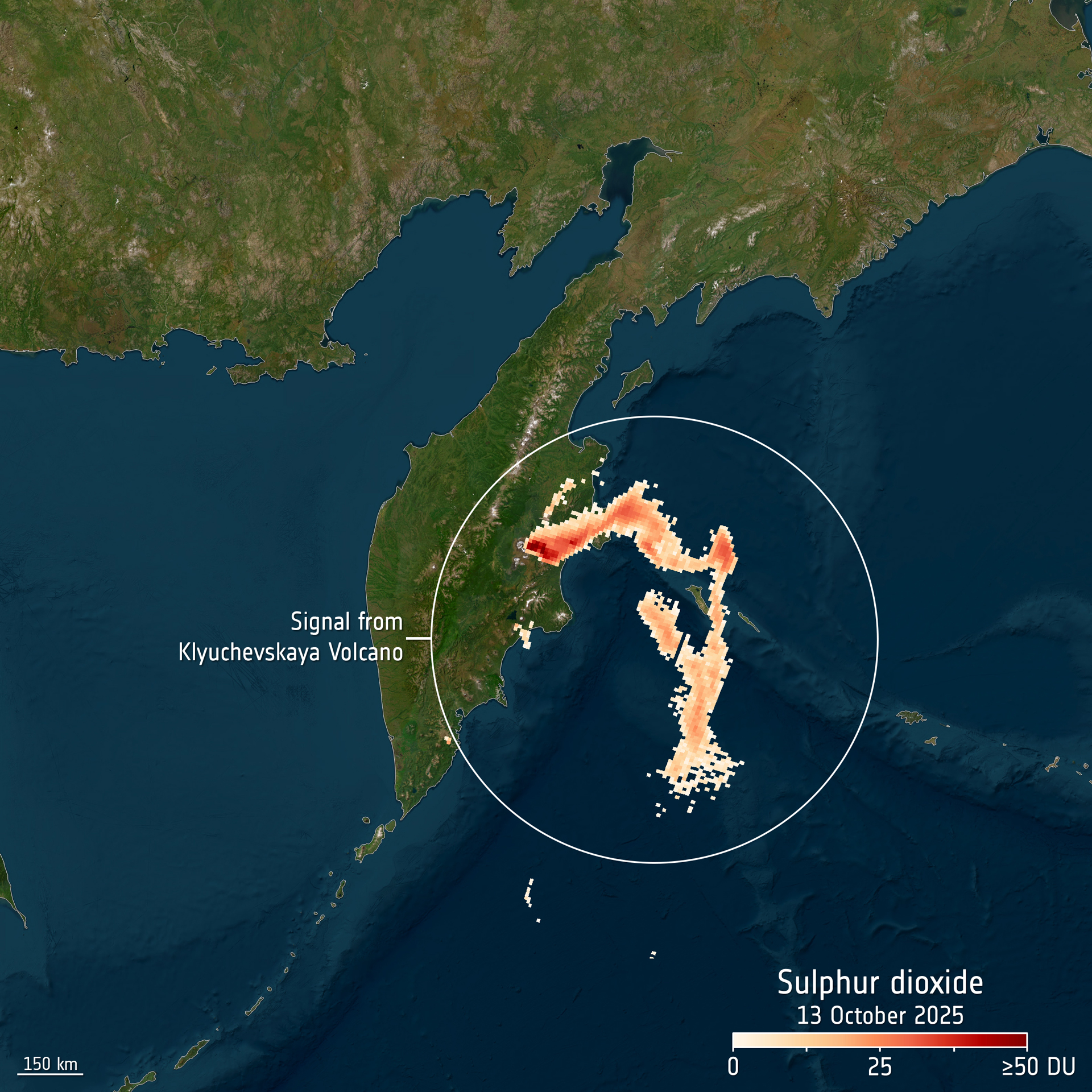Once fully operational under EUMETSAT’s responsibility and following a commissioning phase led by the European Space Agency (ESA), Sentinel-5 will deliver daily, high-quality data to support cleaner-air policies, improve pollution forecasts and help protect public health.
Flying aboard EUMETSAT’s Metop Second Generation A1 (Metop-SGA1) satellite, launched in August 2025, Sentinel-5 is the sixth and final instrument on Metop-SGA1 to deliver its first images, completing the satellite’s powerful suite of atmospheric monitoring tools. It is already revealing detailed maps of key pollutants such as nitrogen dioxide, sulphur dioxide, formaldehyde and ozone. These early images reveal wildfire emissions across Central and Southern Africa, elevated nitrogen dioxide levels over South Africa and sulphur dioxide from an active volcano on the Kamchatka Peninsula.
Sentinel-5’s high-resolution spectrometer system, operating from ultraviolet to shortwave infrared, works in synergy with other advanced instruments on Metop-SGA1 — including IASI-NG, METimage, and 3MI — delivering an unparalleled view of Earth’s atmosphere.
Phil Evans, Director-General of EUMETSAT, said: “Sentinel-5 is a powerful example of how Europe succeeds when we work together. Through the European Commission’s world-leading Copernicus programme, ESA has developed an exceptional instrument and EUMETSAT will now reliably operate it and ensure that its full value reaches users worldwide. Sentinel-5 will become a cornerstone of Europe’s ability to monitor air quality and support the health and well-being of citizens for years to come.”







